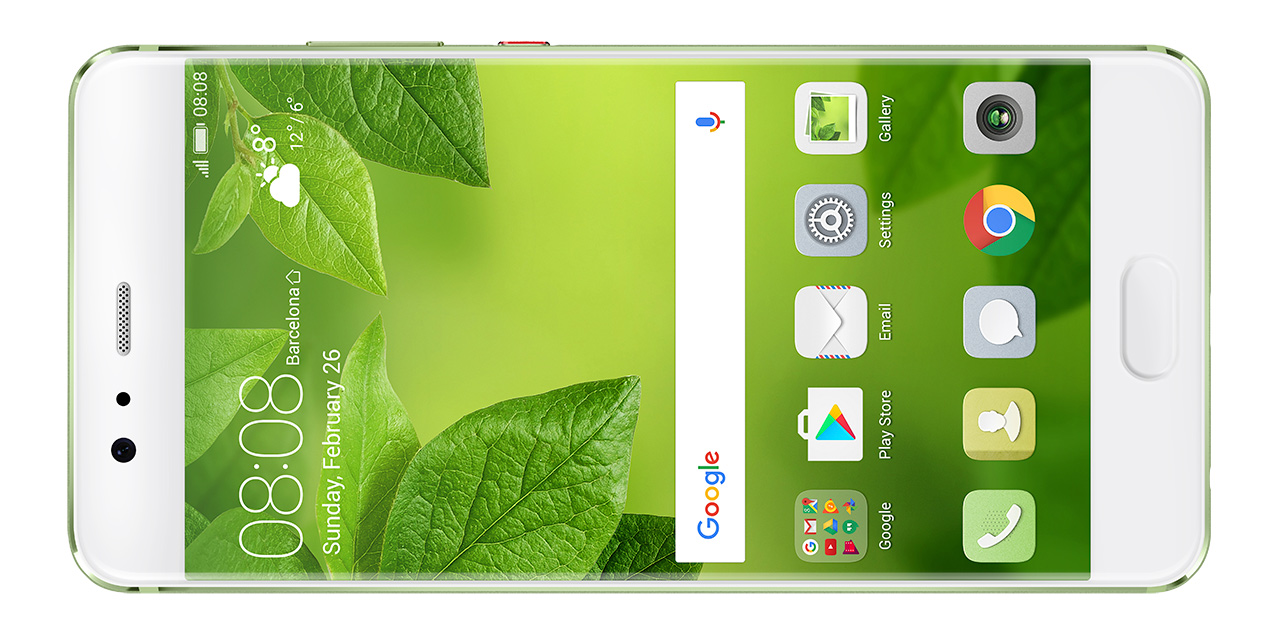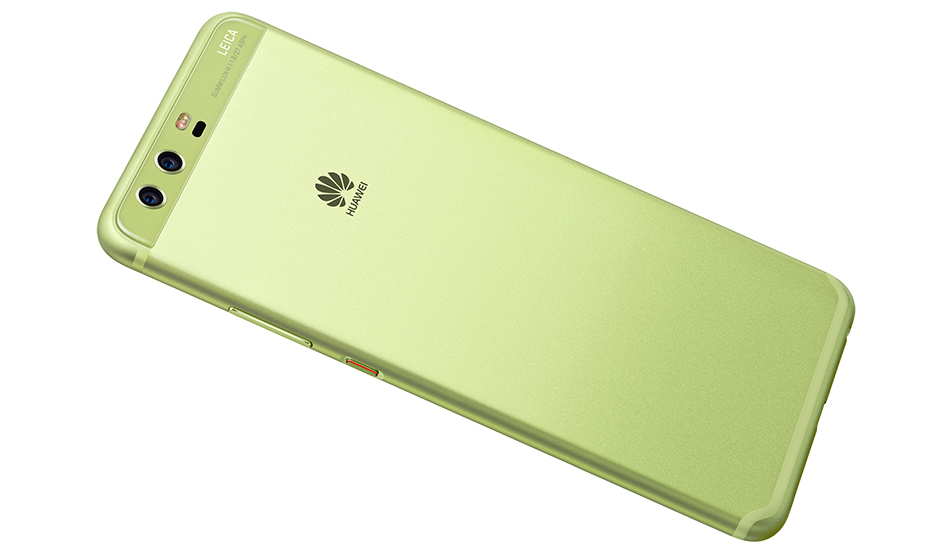Huawei P10 and P10 Plus: Performance & Battery Life Report
by Matt Humrick on May 12, 2017 7:00 AM EST
Huawei is clearly focused on improving the performance of its flagship phones. The P9 and its Kirin 955 SoC performed well in our tests and was smooth and quick during everyday use. For the P10 and P10 Plus, Huawei has tweaked the underlying hardware and software to make them perform even better for longer.
Huawei’s EMUI software includes several features to keep the system feeling more responsive. Using the F2FS filesystem for the /data partition improves storage performance, and Huawei’s new “Machine Learning algorithm” prioritizes system resources (CPU, memory, and storage) to improve responsiveness and performance for the foreground app. Huawei is also using compression to increase the amount of data held in working memory.
| Huawei P10 Series | ||
| Huawei P10 | Huawei P10 Plus | |
| SoC | HiSilicon Kirin 960 4x Cortex-A53 @ 1.84GHz 4x Cortex-A73 @ 2.36GHz ARM Mali-G71 MP8 @ 1037MHz |
|
| Display | 5.1-inch 1920x1080 IPS LCD | 5.5-inch 2560x1440 IPS LCD |
| Dimensions | 145.3 x 69.3 x 6.98 mm 145 grams |
153.5 x 74.2 x 6.98 mm 165 grams |
| RAM | 4GB | 4GB / 6GB |
| NAND | 32GB / 64GB / 128GB + microSD |
64GB / 128GB / 256GB + microSD |
| Battery | 3200 mAh (12.23 Wh) non-replaceable |
3750 mAh (14.33 Wh) non-replaceable |
| Modem | HiSilicon LTE (Integrated) 2G / 3G / 4G LTE |
|
| SIM Size | 1x or 2x NanoSIM | |
| Wireless | 802.11a/b/g/n/ac 2x2 MU-MIMO, BT 4.2, NFC, GPS/Glonass/Galileo/BDS | |
| Connectivity | USB 2.0 Type-C, 3.5mm headset | |
| Launch OS | Android 7.0 with EMUI 5.1 | |
| Software Version Tested | Android 7.0 VTR-L09C432B112 |
Android 7.0 VKY-L29C900B109 |
Inside the new phones is HiSilicon’s Kirin 960 SoC, which uses a big.LITTLE arrangement of four ARM Cortex-A73 CPUs and four Cortex-A53 CPUs. When we looked at the Kirin 960 earlier this year, we found that its A73 core showed higher integer IPC than the Kirin 950/955’s A72 core, but that floating-point IPC generally regressed. The Kirin 960 registered improvements to the memory subsystem too. Even though our lower-level testing produced mixed results, the Kirin 960, which is also used in Huawei’s Mate 9, performed well when running common workloads such as web browsing and photo editing.
In addition to the new CPU, the Kirin 960 also includes a significantly upgraded GPU. The Mali-G71MP8 includes twice as many cores as the Mali-T880MP4 GPU in Kirin 950/955. It’s also based on ARM’s new Bifrost architecture, which includes a number of improvements over the previous Midgard architecture that should help improve shader core utilization.
Huawei, like other OEMs, is currently struggling to procure some of the other internal components—notably NAND and RAM—which can impact overall system performance. Samsung, SK Hynix, and Toshiba have said that they are struggling to produce enough flash memory in the face of increased demand, especially for higher density modules, and issues with ramping up 3D NAND production. This shortage, which applies to DRAM as well, started in 2016 and will likely extend through the remainder of 2017.
With supplies short and component costs rising, Huawei confirmed that it is sourcing memory components from multiple suppliers and stated that it never committed to using any specific type of NAND. Indeed, P10 owners are claiming that some units are using eMMC instead of UFS NAND, along with both LPDDR3 and LPDDR4 RAM. Multi-sourcing is actually very common among smartphone OEMs, particularly larger ones such as Apple, Huawei, LG, and Samsung, for a number of different components, including NAND, RAM, display panels, modems/RF, and camera sensors. Apple has even sourced SoCs from different foundries. Problems can arise, however, if the OEM does not hold its suppliers to the same standards and allows parts from different vendors to vary wildly in performance, which, unfortunately, happens all too frequently.
Based on Huawei’s official statement, we have no way to know who its suppliers are, what components they are or are not using (LPDDR3/LPDDR4, eMMC/UFS), or how many phones are using the potentially slower components. It only said that component selection is random based on the current supply and that there is no way for consumers to know what they are buying before opening the box.
In this report, we’ll establish what components our particular P10 and P10 Plus review units use, and then run them through a series of tests to evaluate everyday performance and battery life. Huawei was able to extend the Mate 9’s battery life over the previous generation, so it will be interesting to see if this is true for the P10 as well.












74 Comments
View All Comments
Eden-K121D - Friday, May 12, 2017 - link
It is very hypocritical of a company when they market a Product as a flagship but don't hold them to the same standard. It is very bad that they mislead customers about very much slower emmc and then make rubbish claims of optimization.BurntMyBacon - Friday, May 12, 2017 - link
Roughly equivalent or perceptually equivalent is one thing. Clearly different, as is the case with the flash here, is unquestionably unacceptable. Guess I can mark Huawei off my list of manufacturers to follow.niva - Friday, May 12, 2017 - link
The only Huawei I wanted to buy was the Nexus 6P, and only because Google was in charge of the software running on it. Otherwise I'm really not interested in any Chinese phones, this may be generally true for any non Nexus/Pixel phones but the Chinese have earned a special disdain from me many years ago with their practices/software.So no... I'm not interested in this phone. If you gave me one I'll go ahead and try to sell it immediately.
AlphaBlaster - Sunday, May 14, 2017 - link
Who writes this innocuous crap? "Trump is ruining his political career?" Trump doesn't have a political career. He is a circus clown told what to say by the wealthy few who are running everything, own everything! They put a magpie frontman in that position to guarantee that their status quo is maintained and increases , by design, to their benefit alone, and to the oppression, impoverishment, and murdering of everybody else. "Providing context?" On what? At this stage of the game, the only 'context' any legitimate person should be engaged in is guerilla warfare!kaidenshi - Sunday, May 14, 2017 - link
Did you mix up your AnandTech and Facebook tabs?leexgx - Friday, May 12, 2017 - link
This reminds me of Kingston using different flash that is far slower but nothing on the box to state what it is (only find out when you used it for a bit or do benchmark testss.yu - Saturday, July 29, 2017 - link
If they didn't advertise about specific technology or a specific performance standard the product should reach then you can't fault them, not the case for Huawei.boozed - Monday, May 15, 2017 - link
Did we read the same review?s.yu - Saturday, July 29, 2017 - link
Nice to see more people agreeing with what I've been saying for literally years(since P8), I guess it's inevitable that more discerning customers will come to realize Huawei's deceptive nature as they expand their businesses beyond China. I honestly hope that a company like this would crash into the ground real soon, but I just don't think most of the consumer market is knowledgeable and principled enough for that to happen.virtuastro - Friday, May 12, 2017 - link
I'm glad you said that it's smooth and responsive but not Pixel XL smooth. It's good to know. I want to see how P10/ P10 Plus's camera image quality. But I did saw dxomark review about it.